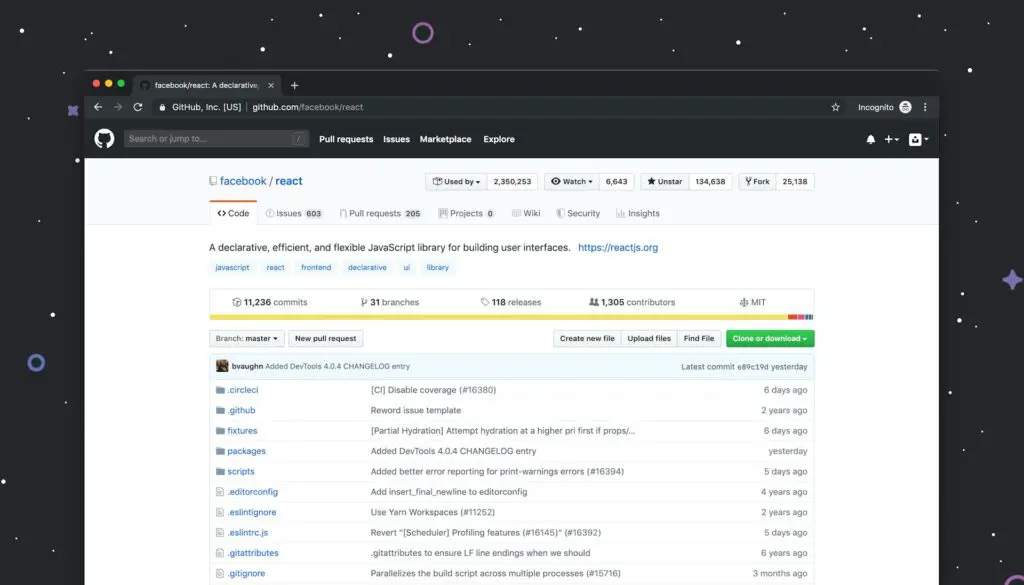Modern tools help simplify creating web apps that are customized based on the user requirements. However, the developers have to integrate advanced testing scenarios like automation testing to verify the proper functioning of all the components present in these web apps. It is also essential to ensure these apps are functional in all instances and use cases.
Currently, React is one of the most popular JavaScript frameworks that has multiple component UI libraries built on top of it. Using these UI libraries, developers can access prebuilt and customizable components to reduce the development process. It also helps enhance code reusability and deliver polished user experiences.
With this article, we are going to understand some of the most popular React UI component libraries available in 2024. We will also take a deep look at some other significant benefits and best practices of implementing React UI component libraries.
Table of Contents
Understanding React UI Component Libraries

React UI component libraries are collections of preloaded and ready-to-use user interface elements. These elements help the developers to accelerate the software development process. Moreover, these design elements range from buttons, models, and cards to complex components like charts and data tables.
The purpose of React UI Component Libraries is to simplify the creation of user interfaces by providing developers with building blocks and elements. These blocks follow best practices in terms of design and accessibility.
Benefits of Using React UI Component Libraries
Before we start understanding the most useful React UI component libraries in 2024, let us focus on the significant benefits of using React UI component libraries in the web app development process:
- Using a React UI component simplifies and speeds up the process of implementing functionalities and design features. This is because the developers do not have to focus on writing code for each component from scratch.
- Since CSS takes time to learn, designing complex user interfaces can be challenging. Instead, React UI Component Libraries allow beginners to import and use the available elements without focusing too much on the CSS designs.
- Using React UI libraries, the developers can provide a consistent look and feel across the web application. This is because the design language is compliant with the cohesive style guide.
- All the React UI Component libraries reduce the app development time by eliminating the need to build components from start. It also allows the developers to focus on more complex functionalities present within the app.
- Although the React UI libraries are prebuilt, they can be customized to fit the project-specific requirements or the individual preferences of the developers.
- All the popular React UI libraries have large communities that guarantee continuous development, plenty of documentation, and bug fixes.
- Finally, many UI libraries prioritize user accessibility, making it easier to create apps that are usable by everyone.
Most Useful React UI Component Libraries in 2024

Let us now explore the best React UI component libraries that are shaping the future of modern web app development:
Material-UI: Material Design Principles For UI Design Elevation
Material-UI has been one of the long-time favorites of React developers for its adherence to Google material design guidelines. It provides an extensive collection of beautifully crafted components. Using these components, the developers can create visually stunning and intuitive user interfaces.
With the 2024 standards of UI design, Material-UI continues to evolve, introducing new features, components, and improvements to stay ahead of the competition. It also provides seamless integration with React for building modern and responsive web apps.
Ant Design: Comprehensive Design System For React Apps
Ant Design has created a reputation as a comprehensive design system for React apps. It offers a rich library of components and a cohesive visual language. Its primary focus is on improving customization, accessibility, and developer experience. Ant Design is also an excellent solution for building enterprise-grade web apps.
In 2024, Ant Design will continue to innovate by providing new tools and resources to streamline the development workflow. So, whether the developers are building a simple dashboard or a complex data visualization tool, Ant Design has got them covered with its extensive suite of React UI components.
Chakra UI: Simplifying UI Development With Modular Components
In recent years, Chakra UI has gained a lot of popularity for its flexibility, simplicity, and developer-friendly API. Its primary focus is accessibility and developer experience. So, to achieve this goal, it offers a modular set of components that can be easily extended and customized to fit any design aesthetic.
As we enter 2024, Chakra UI maintains its commitment to its core principles while introducing new enhancements and features to address the evolving needs of developers. Chakra UI provides a solid foundation for building responsive and accessible web apps for both seasoned developers and newcomers.
Tailwind CSS: Utility-First CSS for UI development
Using Tailwind CSS, the developers have revolutionized their approach to UI development practices. This is because it provides a utility-first CSS framework with the help of a set of utility classes that can be composed for creating custom designs. Tailwind CSS also offers unparalleled control and flexibility over all the UI component stylings.
In 2024, tailwind CSS will continue to gain popularity among React developers using its performance, simplicity, and extensive documentation. So, whether the React developers are building a simple landing page or a complex web app, Tailwind CSS will empower them to create a beautiful and responsive design easily.
React Bootstrap: Integrating Bootstrap With React
Using React Bootstrap, developers can combine the power of bootstrap CSS and JavaScript components using the flexibility of React. It has also become a popular choice for building modern responsive web apps. It has an extensive library of components and a built-in grid system to simplify the process of building complex layouts and UI elements.
In 2024, React Bootstrap remains a reliable choice for developers looking to use the robustness and familiarity of the Bootstrap framework with React web app projects. So, whether the React developers are building a portfolio website or an e-commerce platform, React Bootstrap will provide a solid foundation for building accessible and responsive user interfaces.
Semantic UI React: Creating Beautiful And Intuitive User Interfaces
Using Semantic UI React, the developers can combine the elegance and simplicity of Semantic UI with the world of React development. It also provides an intuitive API and a comprehensive set of components for empowering developers to easily create responsive and beautiful user interfaces.
In 2024, Semantic UI React will continue to evolve and introduce new components, improvements, and themes. These additions will help the developers improve their UI experiences. So, it will be an excellent addition for front-end enthusiasts or seasoned developers trying to offer a wide range of tools and resources for elevating UI designs.
Evergreen: Building Scalable and Responsive Web Apps
Finally, Evergreen is a UI framework built by Segment. This framework is primarily designed to help developers build responsive and scalable web apps quickly. It uses its modular architecture and intuitive API to provide a robust foundation for building complex user interfaces.
In 2024, Evergreen will remain a popular choice among React developers due to its performance, simplicity, and extensive documentation. So, whether the developers are building a simple blog or a sophisticated dashboard, Evergreen will provide a rich set of utilities and components for streamlining the overall development workflow.
Best Practices for Using React UI Component Libraries
Now, let us go through some of the best practices that can help React developers to utilize the full potential of their development environments:
- Understanding the Library Documentation
After choosing the preferred React UI component library, the developers must go through the official documentation to understand the available components, customization options, props, and usage examples. Understanding the library API will help the developers utilize its features efficiently and avoid unnecessary roadblocks.
- Keeping the Dependency Up-to-Date
It is crucial to regularly update the UI component libraries and their dependencies to use its new features, performance improvements, and bug fixes. Outdated libraries can also contain security vulnerabilities or compatibility issues with new versions of React or other dependencies. These obstacles can lead to severe errors during the development process.
- UI Logic Separation from the Business Logic
The developers must follow the principle of separation of concerns by keeping business logic outside UI logic within React components. This approach ensures better code maintainability and also facilitates easier testing of UI components.
- Using Component Positioning
The developers must use the power of component position to create complex UI layouts and formalities by combining smaller and reusable components. These approaches also promote code reusability and make the code base more maintainable and modular.
- Integrating Real Devices
While working with React UI component libraries, the developers must check the functioning of these components on real devices to understand the influence of physical device parameters. However, the process of setting up and maintaining a real device test lab is not only expensive but also hectic.
However, modern cloud platforms provide access to hundreds of real devices through geographically independent remote servers. These servers also provide improved application compatibility testing with outdated devices and older browser versions. LambdaTest is an AI-powered test orchestration and execution platform that can simultaneously perform cross browser testing by running the React UI test cases across a plethora of devices and browsers.
This platform also uses real-time test logging and comprehensive test reporting to simplify the test tracking and troubleshooting process.
- Thoroughly Testing the Components
It is vital to write unit tests for their React components to ensure they behave as expected and maintain the functionality across updates. The developers should also utilize testing frameworks like React testing library and Jest to test component rendering, edge cases, and user interactions.
This process also helps the developers eliminate the possibility of critical errors in the final Test reports.
- Maintaining the Accessibility
It is essential to ensure that all the React UI components are accessible to multiple users, including those with disabilities. For this approach, the developers must follow accessibility guidelines and test the application with assistive technologies. It will also help them to identify and fix accessibility issues.
Final Thoughts About React UI Component Libraries
In this article, we discussed the benefits of using React UI libraries and some of the most popular React UI component libraries that are currently available in the market. These libraries help developers to simplify their tasks and give users a great user experience. By using the power of these libraries, developers can also accelerate the development workflow, reduce boilerplate code, and deliver exceptional stability across multiple devices.
As the software development industry continues to push the boundaries of web development, these libraries will play a significant role in shaping the future of front-end development for the coming years.



